EVGA GeForce RTX 3070 FTW3 Ultra review: Frigid, silent, and built to overclock
- 30 October, 2020 00:00
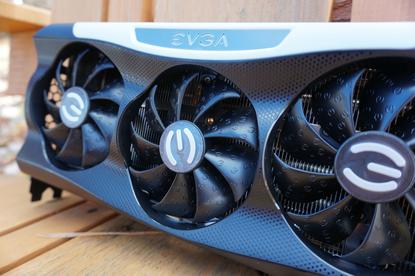
The GeForce RTX 3070 is a fantastic GPU, delivering face-melting performance on a par with that of the former $1,200 RTX 2080 Ti flagship for a stunning $700 less, as we covered in our comprehensive RTX 3070 Founders Edition review. Nvidia’s Founders Edition is a fine option if you plan to simply stick your graphics card into your system and get to playing. But if you want to push your hardware’s performance to the brink of what’s possible, consider EVGA’s GeForce RTX 3070 FTW3 Ultra.
Like the fantastic EVGA RTX 3080 FTW3 Ultra, this 3070 incarnation costs a steep premium—$610, versus the Nvidia FE’s $500—but you’re paying for every overclocking-friendly feature you could ask for. While Nvidia shrank the RTX 3070 Founders Edition design, which affected noise levels, EVGA stuck to a beefy 3-slot build for the FTW3 Ultra, using heavy metal to tame the Ampere GPU inside. EVGA supplemented the massive cooler with all sorts of tools that make it easier to top the 3DMark leaderboards, like dual BIOSes, several integrated temperature sensors to monitor various parts of the card, a dedicated fan control header, and more.
Does it make sense to spend over $600 on a loaded RTX 3070 when you can upgrade to the much more powerful RTX 3080 for just $100 more? And does AMD's looming $579 Radeon RX 6800 change the equation? Let’s examine the EVGA GeForce RTX 3070 FTW3 Ultra.
EVGA GeForce RTX 3070 FTW3 Ultra specs, features, and design
Here’s a recap of the GeForce RTX 3070’s key technical specifications, compared against its direct predecessor, the $500 RTX 2070, as well as the $1,200 RTX 2080 Ti with which it trades blows in gaming performance.
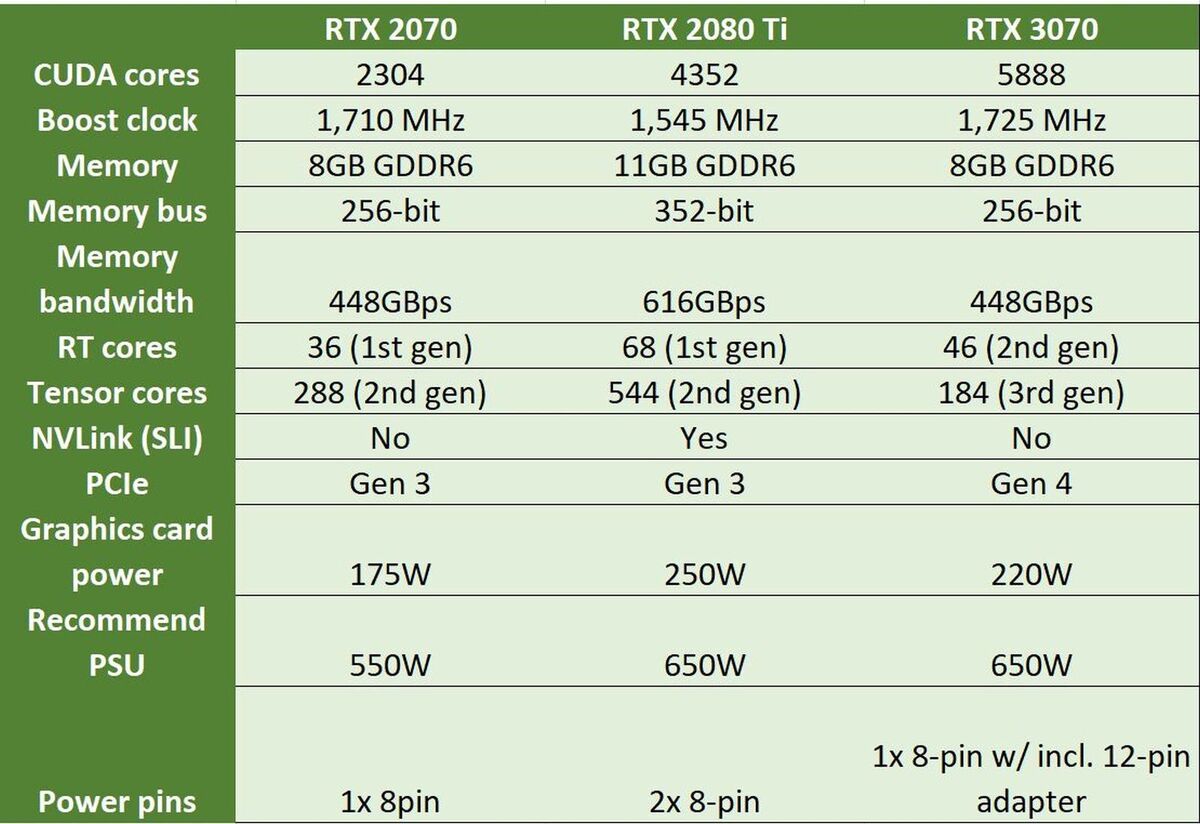 Brad Chacos/IDG
Brad Chacos/IDGEVGA changes only two key underlying technical specs with the RTX 3070 FTW3 Ultra, with the rest of its rejiggering dedicated to the cooler design and extra features. Most people will notice the increased clock speeds first. While the RTX 3070 reference specification hits a 1,725MHz boost clock, EVGA cranked the FTW3 Ultra up to 1,815MHz, a 90Hz increase. That gives it an out-of-the-box boost in gaming frame rates. It’s a small bump, but as you’ll see in our benchmarks section, it’s enough to move past the RTX 2080 Ti pretty much across the board—something that Nvidia’s Founders Edition couldn’t quite manage.
If you’re buying this card, though, you’re probably not planning to stick to stock speeds. Just as important to the FTW3 Ultra’s mission is its increased power requirements. Stock RTX 3070 cards draw 250 watts over a single 8-pin power connector, coming from a recommended 550W power supply. In its quest for overclocking glory, the FTW3 Ultra bumps that up to a pair of 8-pin power connectors and recommends hooking the card up to a sturdier 650W power supply. (There's no need to fiddle with ugly 12-pin adapters like you do with Nvidia's Founders Edition, however.)
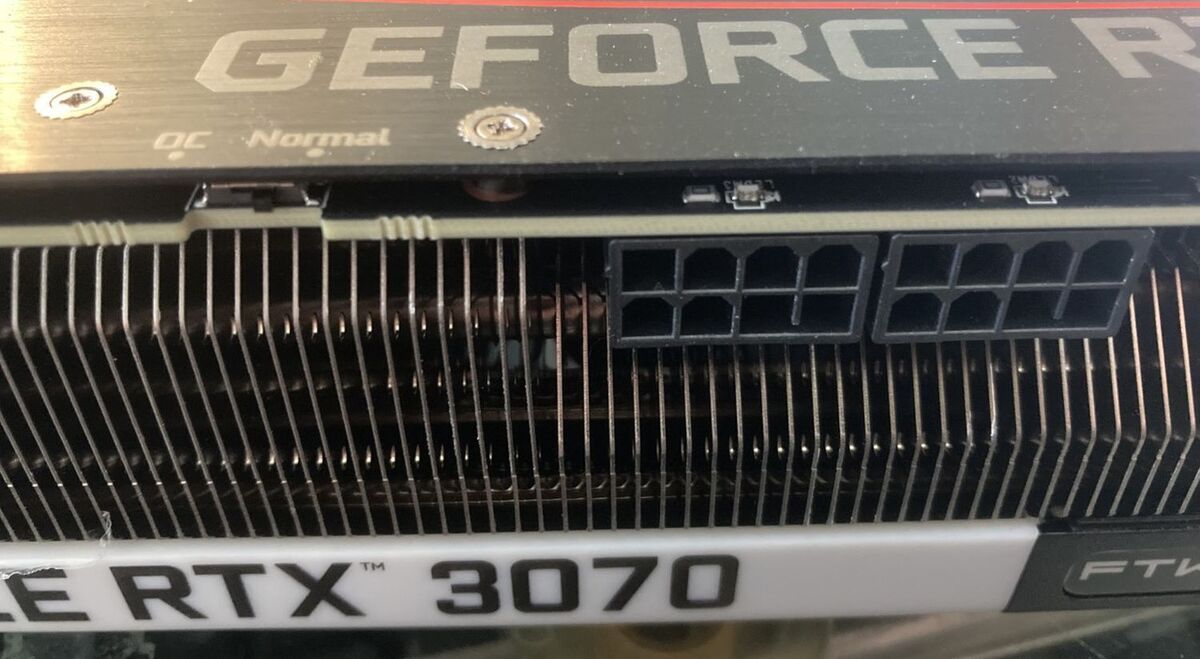 Brad Chacos/IDG
Brad Chacos/IDG
The dual-BIOS switch is to the left of the dual 8-pin power connectors.
EVGA puts the power to good use. This custom card ships from the factory with a higher 275W power limit enabled. Overclockers can crank the power limit up another 11 percent (to 305W) in GPU software like’s EVGA’s stellar Precision X1. Modern Nvidia GPUs get faster when you feed them more power, and like EVGA’s other FTW3 options, the 11-percent power limit increase is probably higher than what you’ll see in most rival custom RTX 30-series GPUs.
EVGA stuck with a gargantuan triple-slot cooler in its quest for overclocking supremacy. The FTW3 Ultra measures 11.8 inches long and 5.4 inches wide, and a chunky three slots thick.
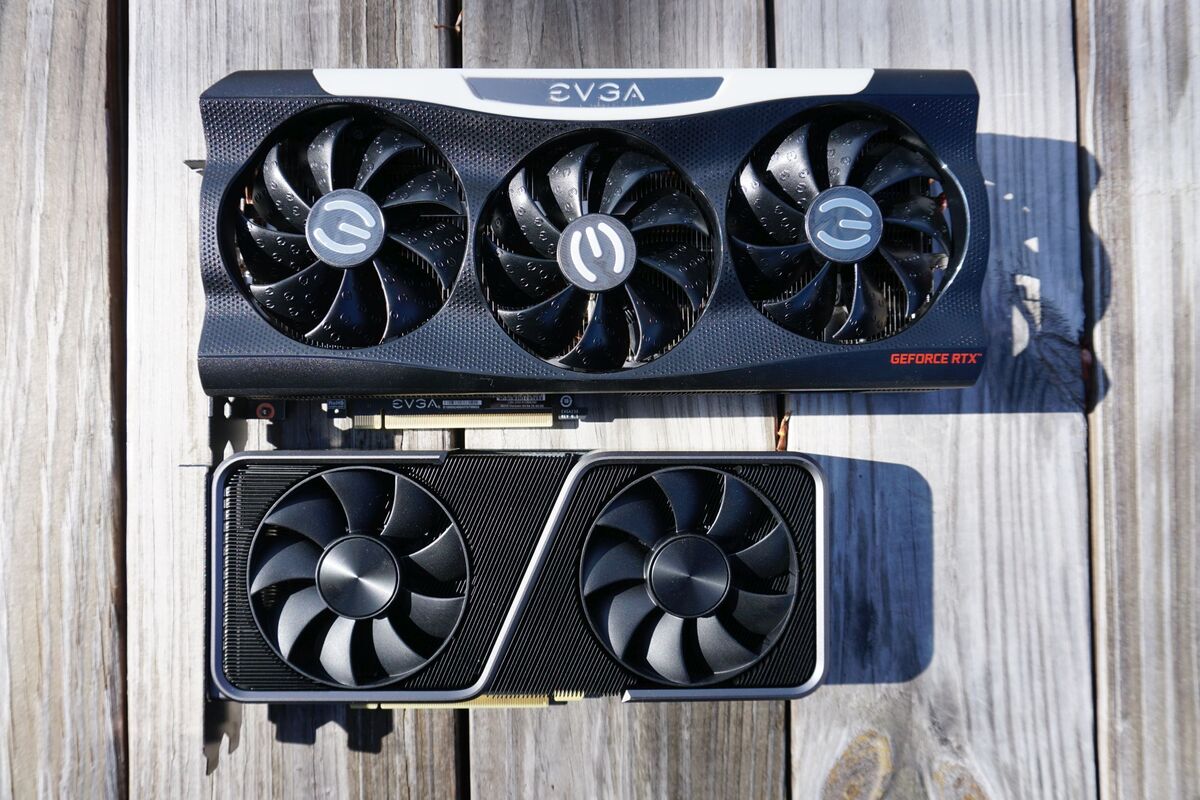 Brad Chacos/IDG
Brad Chacos/IDG
The EVGA FTW3 Ultra is much larger than Nvidia's RTX 3070 Founders Edition.
The design largely (but not exactly) mirrors the custom cooler included with the step-up RTX 3080 FTW3 Ultra, which we covered in depth in our review of that card. In brief, the RTX 3070 FTW3 Ultra includes a massive heat sink infused with multiple copper heat pipes. EVGA says it redesigned the heat sink to allow air to move more freely throughout, then matched that with cut-outs in the custom PCB and aluminum backplate to let air flow through the card (perhaps in a nod to the Founders Edition’s unique flow-through design).
It’s topped by three large second-generation “HDB” fans in its wavy shroud. They won’t kick on until the GPU becomes stressed, creating a silent desktop experience. Each fan is independently controlled to better react to the temperature needs of the hardware directly underneath it.
 Brad Chacos/IDG
Brad Chacos/IDGThat fine-grained temperature control is a key selling point for EVGA’s graphics card. Most GPUs only report singular measurements for GPU and maybe VRM temperatures. The RTX 3070 FTW3 Ultra packs not one, not two, but nine additional iCX3 sensors embedded throughout the card, letting you see temperature readings for different parts of your GPU, memory, and voltage regulation systems. EVGA introduced iCX technology in the GeForce GTX 1080 Superclocked 2 following a (mostly overblown) cooling controversy. It remains a killer exclusive feature for graphics card nerds. If you’re overclocking the FTW3 Ultra to its limits in a bid to top competitive leaderboards, the iCX sensors are an invaluable resource. It’s less useful (but still cool) if you aren’t into hardcore tinkering.
Bottom line, though? EVGA’s substantial custom cooling solution rocks when bolted onto the RTX 3070. Nvidia’s Founders Edition card maintained a chilly 72 degrees Celsius under load, but EVGA’s card never topped an absolutely frigid 62 degrees even under extended duress.
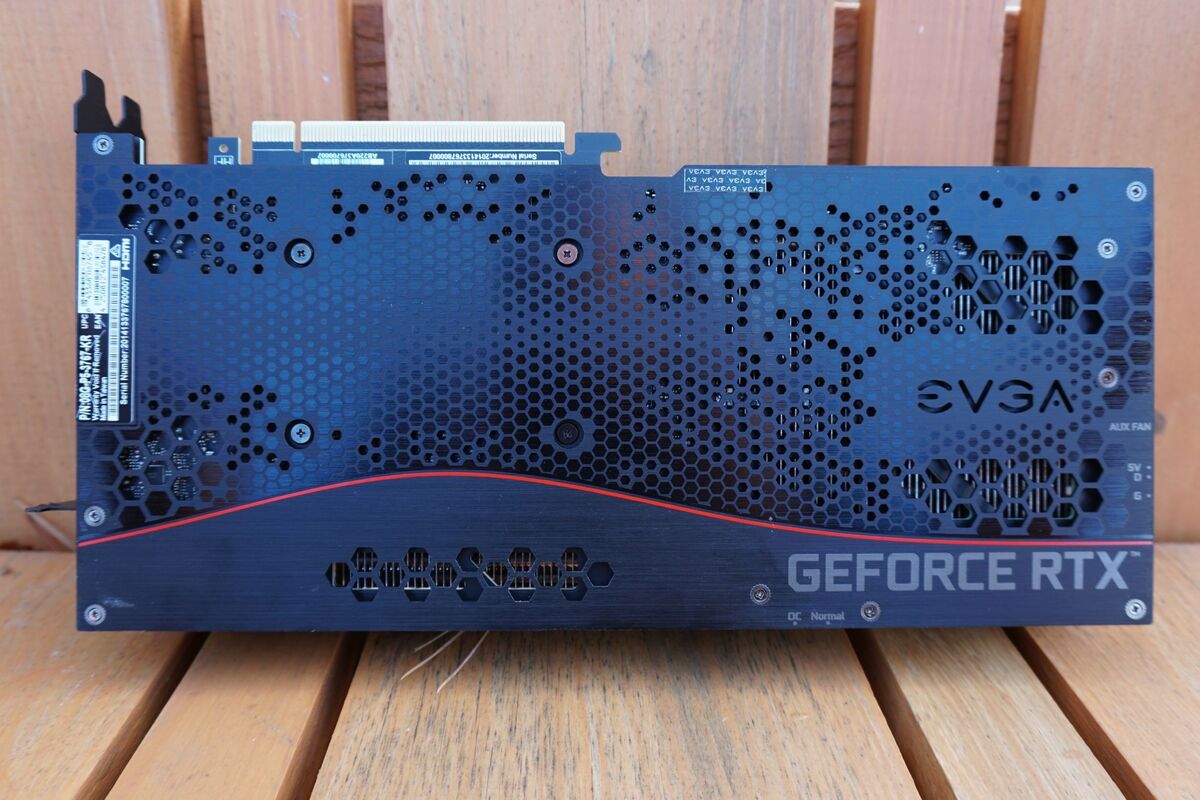 Brad Chacos/IDG
Brad Chacos/IDG
The EVGA FTW3 Ultra also includes a metal backplate.
There are more welcome extras for overclockers as well, including a dual-BIOS switch on the edge of the card. We test with the stock BIOS, but the secondary “OC” BIOS increases fan speeds to reduce temperatures and give Nvidia’s GPU Boost feature more thermal headroom to potentially hit higher clocks. That’s handy as-is for people who prefer one setting or the other, but a dual-BIOS switch is precious for overclocking. If you push things too far with an overclock and lock up your system, being able to flip a switch to a secondary BIOS to get back in and start troubleshooting is a godsend.
EVGA also equipped the FTW3 Ultra with a PWM fan header on the end of the card. You can plug one of your case’s PWM fans into it and have the fan be intelligently controlled directly by the graphics card’s temperature, rather than by your motherboard. Rival graphics cards like Asus ROG Strix have offered this before, and it’s most useful if you use your card to control a front case fan pointed directly at the GPU. Next to the fan header, you’ll find an ARGB header that you can plug into your motherboard to tie it together with your graphics card’s chosen lighting.
Both features can be controlled via EVGA’s clean, easy-to-use Precision X1 software, which also provides access to iCX monitoring, an on-screen display that shows vitals during gaming, and overclocking controls—including an easy-peasy OC Scanner tool for modest one-click overclocking tied to your specific GPU’s particular capabilities.
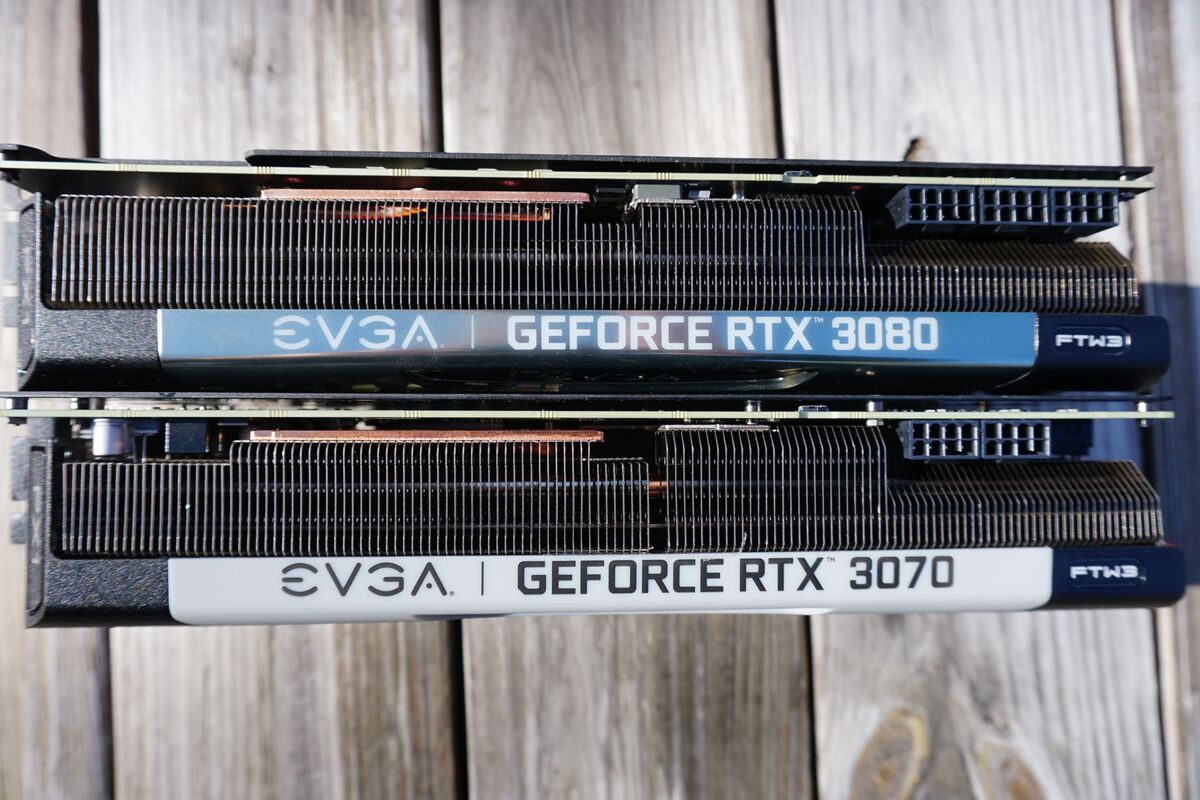 Brad Chacos/IDG
Brad Chacos/IDG
The 3080 FTW3 Ultra's light strip (top) blends more thoughtfully into the card's design than the 3070 FTW3 Ultra's strip (bottom) when the lighting is disabled.
Like its 3080 sibling, the EVGA GeForce RTX 3070 FTW3 Ultra features a large, enthralling RGB light strip along it edge. The color of the RGB strip when you have the RGB off looks different—worse—on the RTX 3070 version, though. On the RTX 3080 FTW3 Ultra, the strip looks metallic, with EVGA and GeForce logos emblazoned on it in white letters. The 3070 version flips that, using dark letters against a milky-white translucent strip. I’m not a fan. The 3080 FTW3 Ultra looks beautiful with the RGB lights on or off, but that white chunk sticks out like a sore thumb on the otherwise dark 3070 FTW3. It’s gorgeous when illuminated, though.
Speaking of aesthetics, it’s worth noting that our 3070 FTW3 Ultra still includes the…controversial…red trim on both ends of the card, which definitely looks out of place on this design. EVGA tells me that all production models that hit the streets will have black trim instead. Hallelujah.
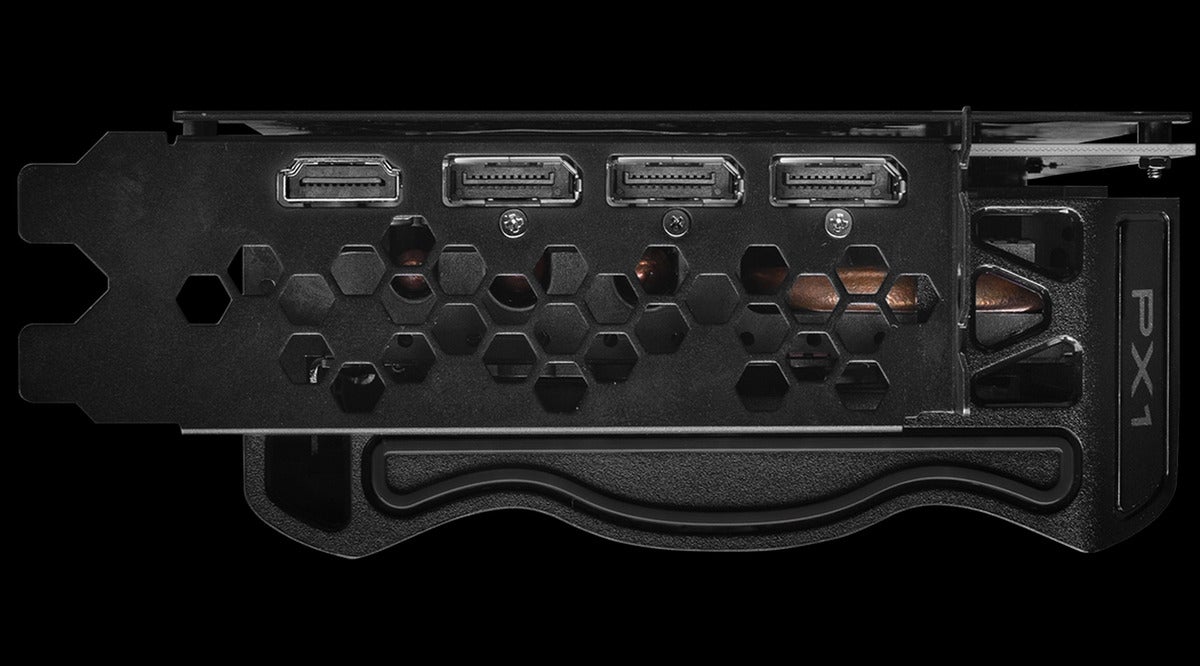 EVGA
EVGA
Adios, red trim, hello port report
That plays into another reason to consider this card: EVGA is known for being very responsive to customer feedback. The company gets high marks around the web for its stellar customer service and EVGA Step-Up Program, and it won the hearts of enthusiasts in recent weeks when it instituted a queue-based system for orders on its RTX 3080 and 3090 offerings, in the face of ongoing overwhelming demand for Nvidia’s new GPUs.
As an RTX 30-series GPU, the FTW3 Ultra also supports AV1 decoding, HDMI 2.1, Nvidia Reflex, RTX IO, Nvidia Broadcast, Shadowplay, and more. Check out our RTX 3080 Founders Edition review for a fuller list of GeForce features.
But enough design talk. Let’s get to the benchmarks.
Next page: Our test system, gaming benchmarks begin
Page Break
Our test system
Our dedicated graphics card test system is a couple of years old, but it's packed with some of the fastest complementary components available to put any potential performance bottlenecks squarely on the GPU. Most of the hardware was provided by the manufacturers, but we purchased the cooler and storage ourselves.
- Intel Core i7-8700K processor ($300 on Amazon) overclocked to 5GHz all cores
- EVGA CLC 240 closed-loop liquid cooler ($105 on Amazon)
- Asus Maximus X Hero motherboard
- 64GB HyperX Predator RGB DDR4/2933 ($355 on Amazon)
- EVGA 1200W SuperNova P2 power supply ($352 on Amazon)
- Corsair Crystal 570X RGB case, with front and top panels removed and an extra rear fan installed for improved airflow
- 2x 500GB Samsung 860 EVO SSDs ($70 each on Amazon)
We’re comparing the $610 EVGA GeForce RTX 3070 FTW3 Ultra against Nvidia’s $500 GeForce RTX 3070 Founders Edition, of course. We’re also including Nvidia’s $800 GeForce RTX 3080 Founders Edition, $1,200 RTX 2080 Ti Founders Edition, $800 RTX 2080 Founders Edition, and $500 RTX 2070 Founders Edition, as well as AMD’s $400 Radeon RX 5700 XT, which matched or even beat the RTX 2070’s performance in many games despite starting at $100 less. For comparison against a wider array of GPUs, check out our Nvidia RTX 3070 FE review.
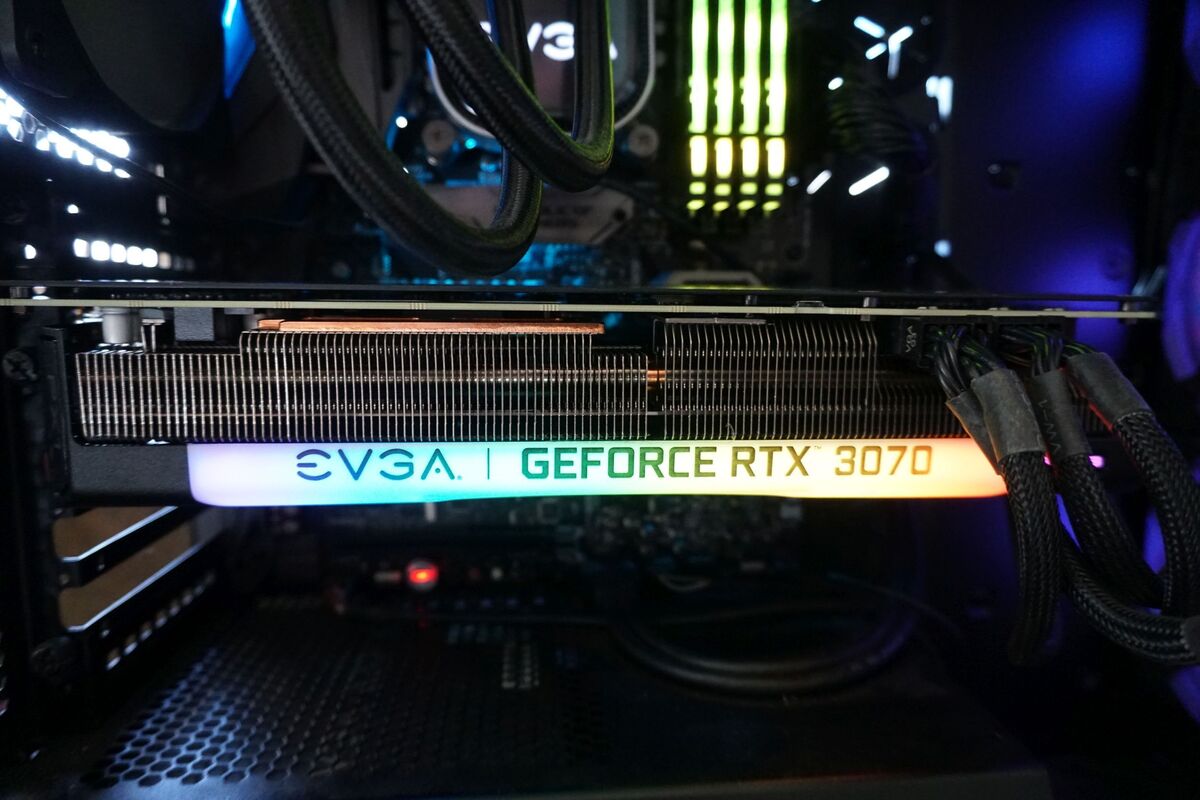 Brad Chacos/IDG
Brad Chacos/IDG
The EVGA RTX 3070 FTW3 Ultra in our test system.
We test a variety of games spanning various engines, genres, and graphics APIs (DirectX 11, DX12, and Vulkan). Each game is tested using its in-game benchmark at the highest possible graphics presets unless otherwise noted, with VSync, frame rate caps, real-time ray tracing or DLSS effects, and FreeSync/G-Sync disabled, along with any other vendor-specific technologies like FidelityFX. We’ve also enabled temporal anti-aliasing (TAA) to push these cards to their limits. We run each benchmark at least three times and list the average result for each test.
Let’s go.
EVGA GeForce RTX 3070 FTW3 Ultra gaming benchmarks
The 90MHz factory overclock applied to EVGA’s FTW3 Ultra grants it a slight performance boost in most games over Nvidia’s stock-clocked RTX 3070 Founders Edition, so we’re going to present these benchmarks without commentary. If you want deeper analysis of how the RTX 3070 stacks up against its RTX 2070 predecessor and the RTX 2080 Ti it goes blow-for-blow with, once again, check out our exhaustive Nvidia RTX 3070 FE review.
EVGA’s overclock provided surprisingly significant performance gains in a few specific scenarios that are worth highlighting, however. The FTW3 is substantially faster than Nvidia’s Founders Edition in in Gears Tactics at 1080p resolution, and in Rainbow Six Siege at all resolutions.
Horizon Zero Dawn
Yep, PlayStation exclusives are coming to the PC now. Horizon Zero Dawn hit Steam with some performance issues, but the most egregious ones have been mostly cleared up thanks to hard work from the developers, and the game topped the sales charts for weeks after its release. It also seems to respond somewhat to PCIe 4.0 scaling, which will make this an interesting inclusion when we shift to a PCIe 4.0-based system in the future.
Horizon Zero Dawn runs on Guerrilla Games’ Decima engine, the same engine that powers Death Stranding. Ambient Occlusion can still offer iffy results if set to Ultra, so we test with that setting at Medium. Every other visual option is maxed out.
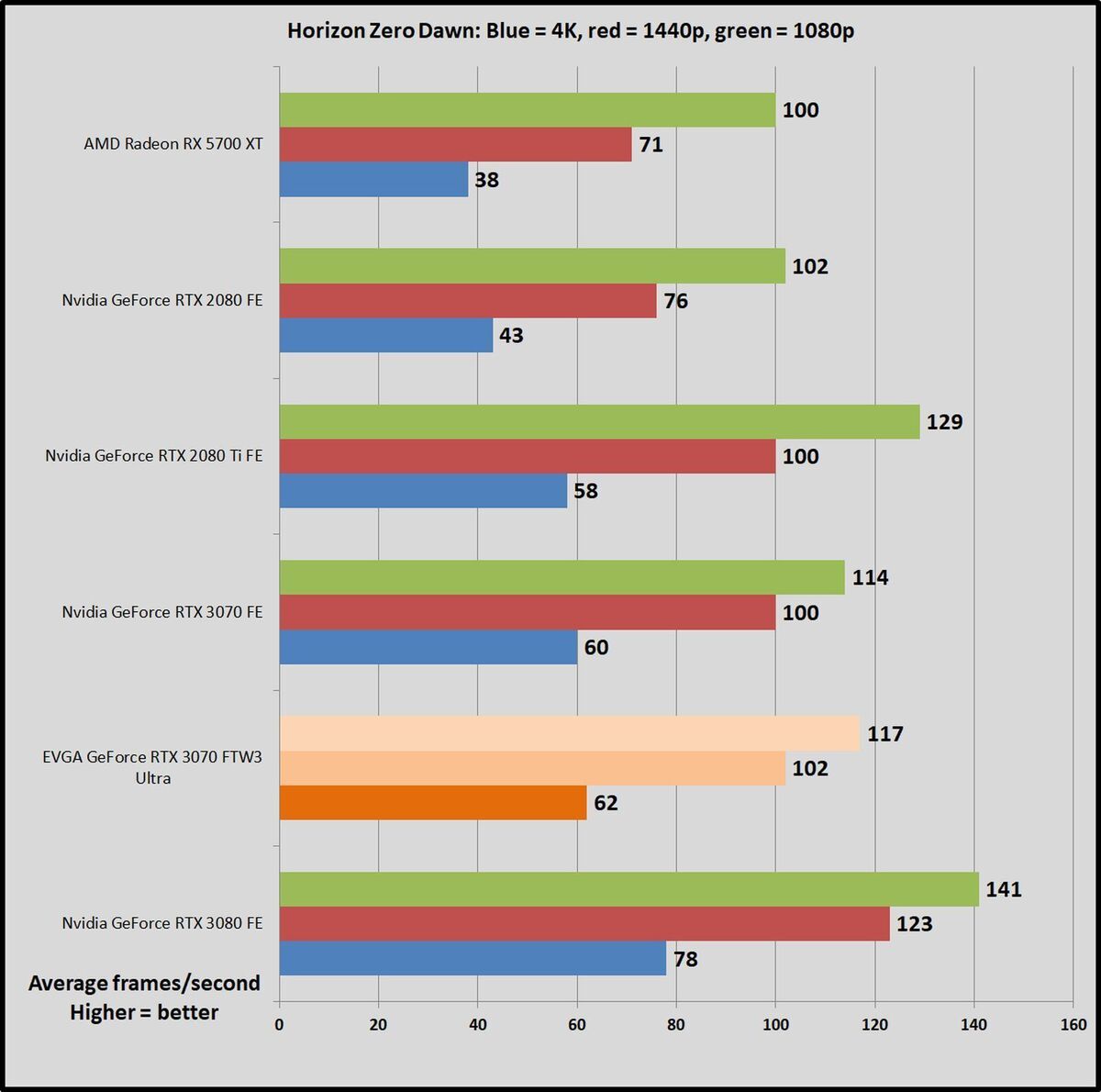 Brad Chacos/IDG
Brad Chacos/IDGGears Tactics
Gears Tactics puts it own brutal, fast-paced spin on the XCOM-like genre. This Unreal Engine 4-powered game was built from the ground up for DirectX 12, and we love being able to work a tactics-style game into our benchmarking suite. Better yet, the game comes with a plethora of graphics options for PC snobs. More games should devote such loving care to explaining what flipping all these visual knobs mean. You can’t use the presets to benchmark Gears Tactics, as it intelligently scales to work best on your installed hardware, meaning that “Ultra” on one graphics card can load different settings than “Ultra” on a weaker card. We manually set all options to their highest possible settings.
 Brad Chacos/IDG
Brad Chacos/IDGWolfenstein: Youngblood
Wolfenstein: Youngblood isn’t the most fun game in the world unless you can play cooperatively with a buddy, but it’s a fearless experiment—and an absolute technical showcase. Running on the Vulkan API, Youngblood achieves blistering frame rates, and it supports all sorts of cutting-edge technologies like ray tracing, DLSS 2.0, HDR, GPU culling, asynchronous computing, and Nvidia’s Content Adaptive Shading. The game includes a built-in benchmark with two different scenes; we tested Lab X.
 Brad Chacos/IDG
Brad Chacos/IDGNext page: Gaming benchmarks continue
Page Break
Metro Exodus
One of the best games of 2019, Metro Exodus is one of the best-looking games around, too. The latest version of the 4A Engine provides incredibly luscious, ultra-detailed visuals, with one of the most stunning real-time ray tracing implementations released yet. We test in DirectX 12 mode with ray tracing, Hairworks, and DLSS disabled for our basic benchmarks.
 Brad Chacos/IDG
Brad Chacos/IDGBorderlands 3
Borderlands is back! Gearbox’s game defaults to DX12, so we do as well, and it gives us a glimpse at the ultra-popular Unreal Engine 4’s performance in a traditional shooter.
 Brad Chacos/IDG
Brad Chacos/IDGStrange Brigade
Strange Brigade is a cooperative third-person shooter where a team of adventurers blasts through hordes of mythological enemies. It’s a technological showcase, built around the next-gen Vulkan and DirectX 12 technologies and infused with features like HDR support and the ability to toggle asynchronous compute on and off. It uses Rebellion’s custom Azure engine. We test using the Vulkan renderer, which is faster than DX12.
 Brad Chacos/IDG
Brad Chacos/IDGTotal War: Troy
The latest game in the popular Total War saga, Troy was given away free for its first 24 hours on the Epic Games Store, moving over 7.5 million copies before it went on proper sale. Total War: Troy is built using a modified version of the Total War: Warhammer 2 engine, and this DX11 title looks stunning for a turn-based strategy game. We test the more intensive battle benchmark.
 Brad Chacos/IDG
Brad Chacos/IDGF1 2020
The latest in a long line of successful racing games, F1 2020 is a gem to test, supplying a wide array of both graphical and benchmarking options, making it a much more reliable (and fun) option that the Forza series. It’s built on the latest version of Codemasters’ buttery-smooth Ego game engine, complete with support for DX12 and Nvidia’s DLSS technology. We test two laps on the Australia course, with clear skies on and DLSS off.
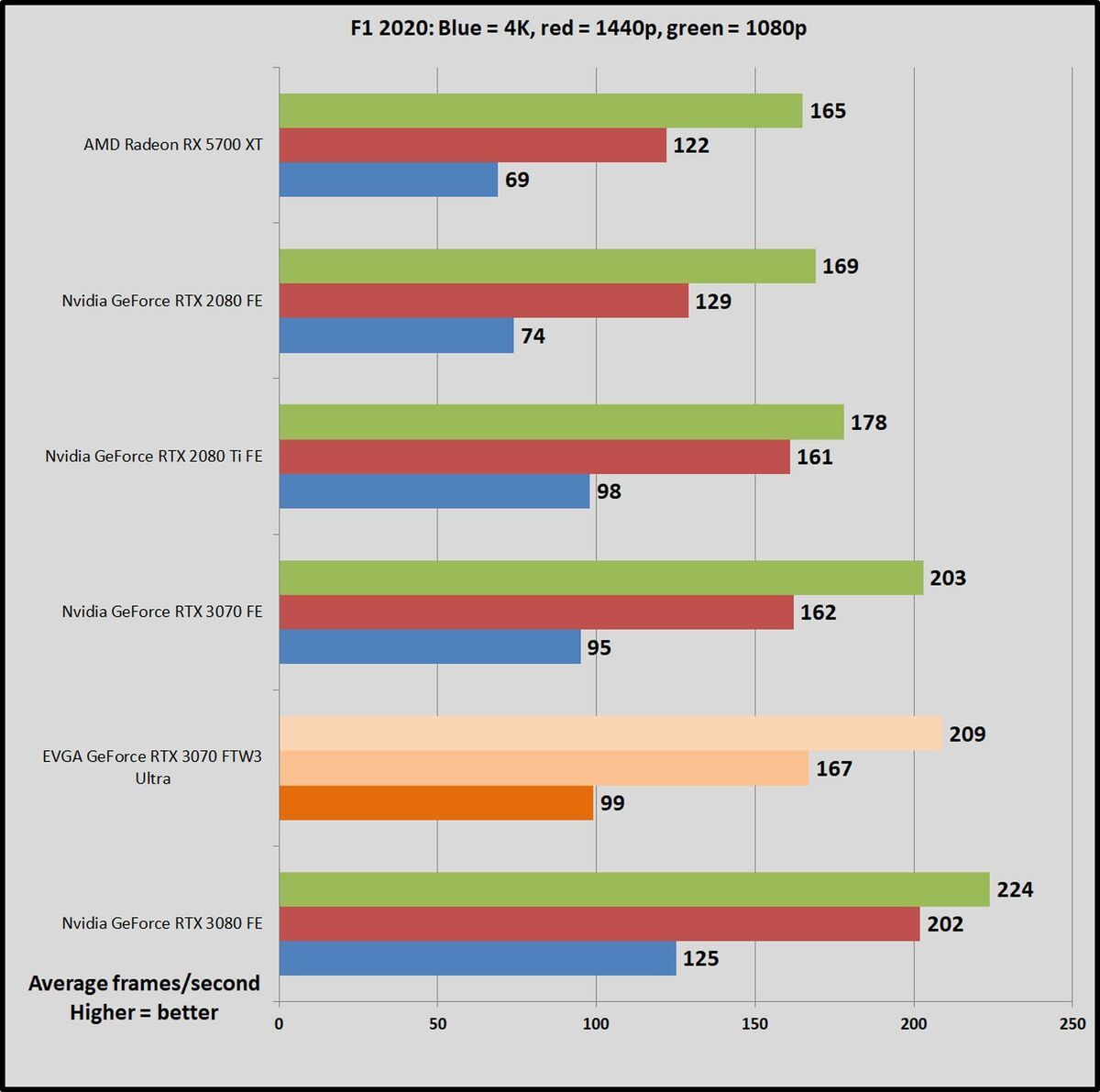 Brad Chacos/IDG
Brad Chacos/IDGShadow of the Tomb Raider
Shadow of the Tomb Raider concludes the reboot trilogy, and it’s utterly gorgeous. Square Enix optimized this game for DX12, and recommends DX11 only if you’re using older hardware or Windows 7, so we test with DX12. Shadow of the Tomb Raider uses an enhanced version of the Foundation engine that also powered Rise of the Tomb Raider and includes optional real-time ray tracing and DLSS features.
 Brad Chacos/IDG
Brad Chacos/IDGNext page: Gaming benchmarks continue, power and thermals
Page Break
GTA V
This DX11 game that isn’t really a visual barn-burner like the (somewhat wonky) Red Dead Redemption 2, but it still tops the Steam charts day in and day out, so we deem it more worthy of testing. RDR2 will melt your graphics card, sure, but GTA V remains so popular years after launch that upgraded versions of it will be available on the next-generation consoles. That’s staying power.
We test Grand Theft Auto V with all options turned to Very High, all Advanced Graphics options except extended shadows enabled, and FXAA. GTA V runs on the RAGE engine and has received substantial updates since its initial launch.
 Brad Chacos/IDG
Brad Chacos/IDGRainbow Six Siege
Like GTA V, Ubisoft’s Rainbow Six Siege still dominates the Steam charts years after its launch, and it’ll be getting a visual upgrade for the next-gen consoles. The developers have poured a ton of work into the game’s AnvilNext engine over the years, eventually rolling out a Vulkan version of the game that we use to test. By default, the game lowers the render scaling to increase frame rates, but we set it to 100 percent to benchmark native rendering performance on graphics cards. Even still, frame rates soar—especially with the EVGA FTW3 Ultra’s out-of-the-box overclock applied.
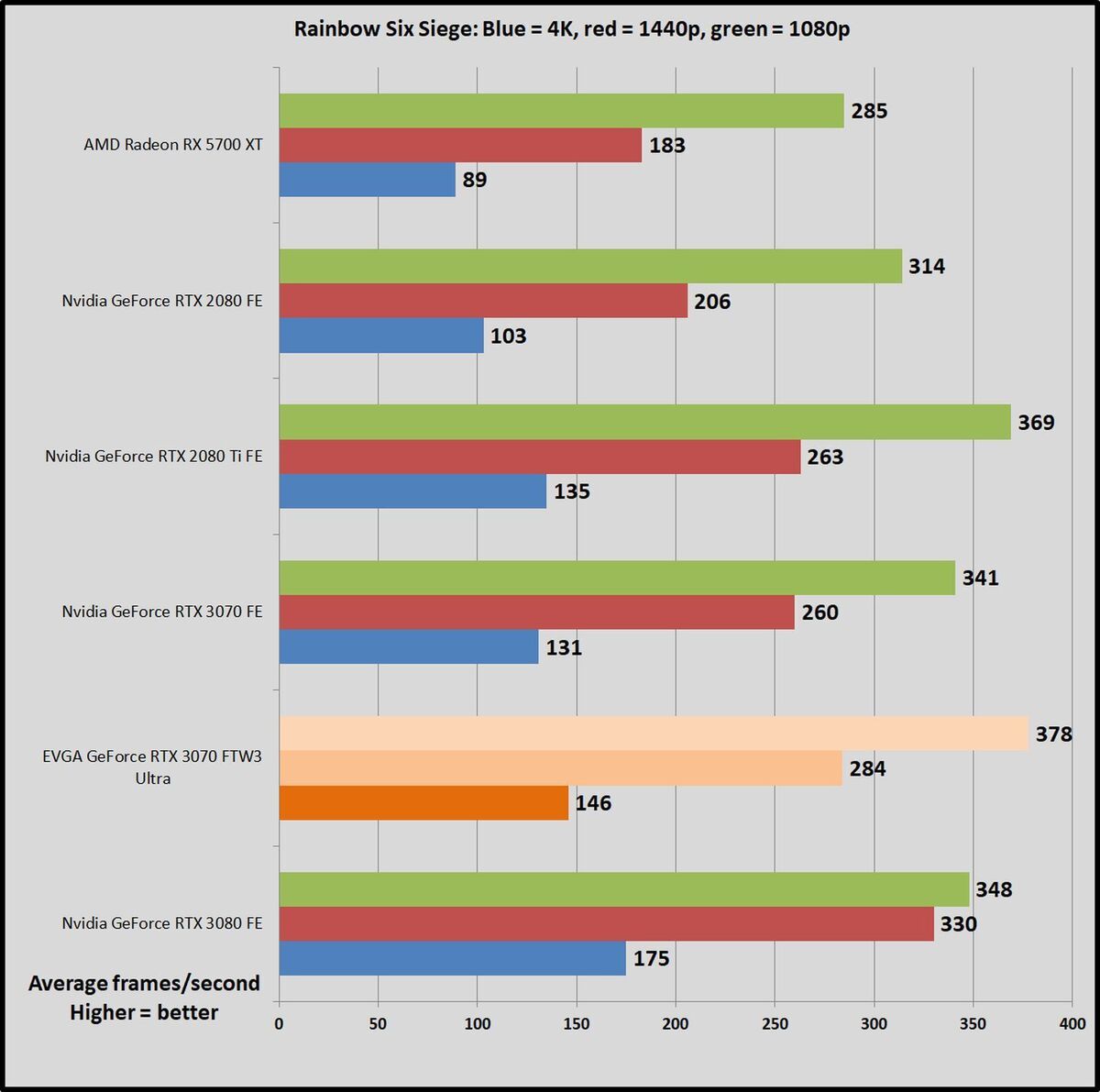 Brad Chacos/IDG
Brad Chacos/IDGPower draw, thermals, and noise
We test power draw by looping the F1 2020 benchmark at 4K for about 20 minutes after we’ve benchmarked everything else and noting the highest reading on our Watts Up Pro meter, which measures the power consumption of our entire test system. The initial part of the race, where all competing cars are onscreen simultaneously, tends to be the most demanding portion.
This isn’t a worst-case test. We removed the Core i7 8700K’s overclock and specifically chose a GPU-bound game running at a GPU-bound resolution to gauge performance when the graphics card is sweating hard. If you’re playing a game that also hammers the CPU, you could see higher overall system power draws. Consider yourself warned.
 Brad Chacos/IDG
Brad Chacos/IDGThe EVGA FTW3 Ultra draws more power than the Nvidia RTX 3070 Founders Edition, but that’s to be expected. This is an overclocked card with a higher power limit enabled for enhanced performance. Even still, note that the FTW3 Ultra manages to come well under the RTX 2080 Ti’s power demands despite matching or beating its performance in games.
We test thermals by leaving GPU-Z open during the F1 2020 power draw test, noting the highest maximum temperature at the end.
 Brad Chacos/IDG
Brad Chacos/IDGHere’s where EVGA’s goliath custom cooler shines, even before you start overclocking. Nvidia’s RTX 3070 Founders Edition hit 72 degrees Celsius under load, which is comparable to what we've seen from well-designed custom cooling solutions in the past. But EVGA’s cooler makes Nvidia’s cool temperatures look downright balmy, topping out at a frosty 62 degrees even after long gaming workloads. Even better, while Nvidia’s FE can be heard while gaming, EVGA’s FTW3 Ultra stays essentially silent at all times, even when we popped off our case’s side panel for a closer listen.
We’ve said it before, and we’ll say it again: This is a fantastic cooler.
Next page: Should you buy the EVGA GeForce RTX 3070 FTW3 Ultra?
Page Break
Should you buy the EVGA GeForce RTX 3070 FTW3 Ultra?
If you’re an overclocking enthusiast, or someone who wants the best versions of the graphics cards they buy, the EVGA GeForce RTX 3070 FTW3 Ultra should definitely be on your shortlist. To help refine your choice, we'll walk you through the major feature and cost considerations.
 Brad Chacos/IDG
Brad Chacos/IDGThere's so much to talk about with the features. The FTW3 Ultra’s factory overclock pushes this model firmly past the performance of the RTX 2080 Ti, last generation’s $1,200 flagship, while the stock-clocked Nvidia RTX 3070 Founders Edition settles for trading blows. The FTW3 Ultra is an excellent option for 4K gaming, or high refresh rate gaming at 1440p or 1080p resolution, though the 8GB memory buffer probably makes it more suitable for 1440p in the long run.
Better yet, EVGA loaded this card with overclocking-friendly specs to help you push performance even further. You get a dual-BIOS switch, a much higher power limit, an array of helpful temperature sensors, and the superb Precision X1 software to pull it all together.
EVGA sharpens those overclocking chops by equipping the RTX 3070 FTW3 Ultra with a monstrous 3-slot cooler. It’s phenomenal—both incredibly frigid and utterly silent under full load using stock settings. The cooler also includes a PWM fan header that lets you dedicate a case fan to respond to your graphics card’s thermals.
Remember that you’ll need a 650W power supply and two 8-pin connectors to run this beast, more than the stock RTX 3070 cards require. To be fair, however, that’s more of a benefit than a drawback for the overclocking enthusiasts who would buy the FTW3 Ultra.
 Brad Chacos/IDG
Brad Chacos/IDGNow let’s look at the money. At $610, the EVGA RTX 3070 FTW3 Ultra costs $110 more than the Nvidia RTX 3070 Founders Edition. The RTX 3080 version of the FTW3 Ultra also costs $110 more than its Founders Edition counterpart.
The upcharge rests a little easier with the RTX 3080 model. To upgrade beyond the 3080, you’d need to jump to the $1,500 RTX 3090, which costs over twice as much.
On the other hand, paying $610 for an RTX 3070 doesn’t seem worthwhile when entry-level RTX 3080s (including the great Nvidia Founders Edition) start at $700. Unless your budget is really tight, paying a little more for the RTX 3080 gives you significantly higher frame rates and a better memory configuration—faster GDDR6X (the RTX 3070 uses slower GDDR6), and 2GB more of it.
There is a third consideration: AMD. The company’s $579 Radeon RX 6800 and $649 Radeon RX 6800 XT could put pricier RTX 3070 cards like this one between a rock and a hard place when they launch on November 18. If Team Red's claims prove true, AMD's duo could be faster and have more memory, though the baseline models won't be anywhere near as beefed-out as EVGA's luxurious FTW3 Ultra.
It boils down to this: The EVGA GeForce RTX 3070 FTW3 Ultra is a fantastic version of a fantastic GPU, full stop. But you’ll really want to put those overclocking features to good use, or place a premium on its exceptional cooling and noise performance, to consider picking it up. If you do pull the trigger on this card (and can fit its massive girth in your system) you won’t be disappointed.





